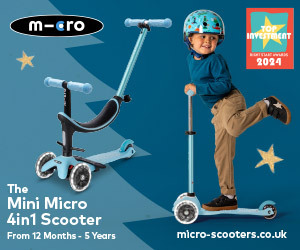On yer bike!
Published
Teaching children to ride a bike using stabilisers may take twice as long as doing so without, according to children’s quality bicycle maker www.islabikes.co.uk. In the hopes of highlighting how to best teach a child to cycle, their team surveyed 2,200 UK parents with children who have learned to cycle in the past 12 months.

Over half of UK parents (59 per cent) teach their child to ride using a stabiliser. Yet their research suggests it takes two and a half hours overall for a child to learn to ride using stabilisers, compared with just 47 minutes without them. The most common stumbling blocks experienced by children using stabilisers are wobbles/falls, struggling to balance and difficulty with steering.
To better understand parents’ teaching techniques, participants in the survey were also asked to share stories of teaching their child to cycle. One of the whackiest accounts included a parent who sat their child on their bike at the top of a hill and let go, with someone waiting at the bottom to catch them. Another technique was the parent-holding-on-to-the-saddle and then letting go approach. Both techniques ended in falls!
The team at Islabikes have highlighted the main reasons why parents should go without stabilisers when teaching their child to cycle:
- A bike steers by leaning and stabilisers prevent this by putting the rider’s weight on the outermost wheel – leaning them in the opposite direction to which they’re turning.
- If you teach children to ride with stabilisers, they’ll find it harder to balance when they’re eventually taken off, meaning they’ll need to ‘relearn’ how to ride.
- Stabilisers tend to delay the point when children learn to ride (when the stabilisers are removed) and in the meantime they may pick up incorrect habits which will need to be unlearned.
Visit www.islabikes.co.uk






